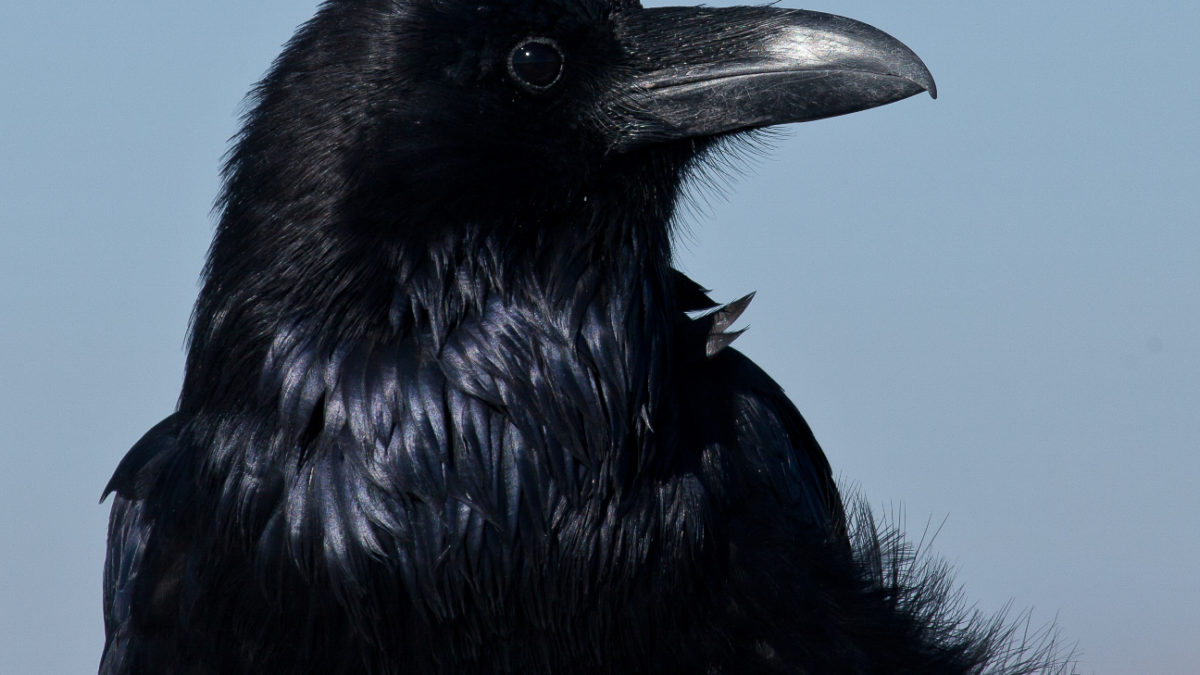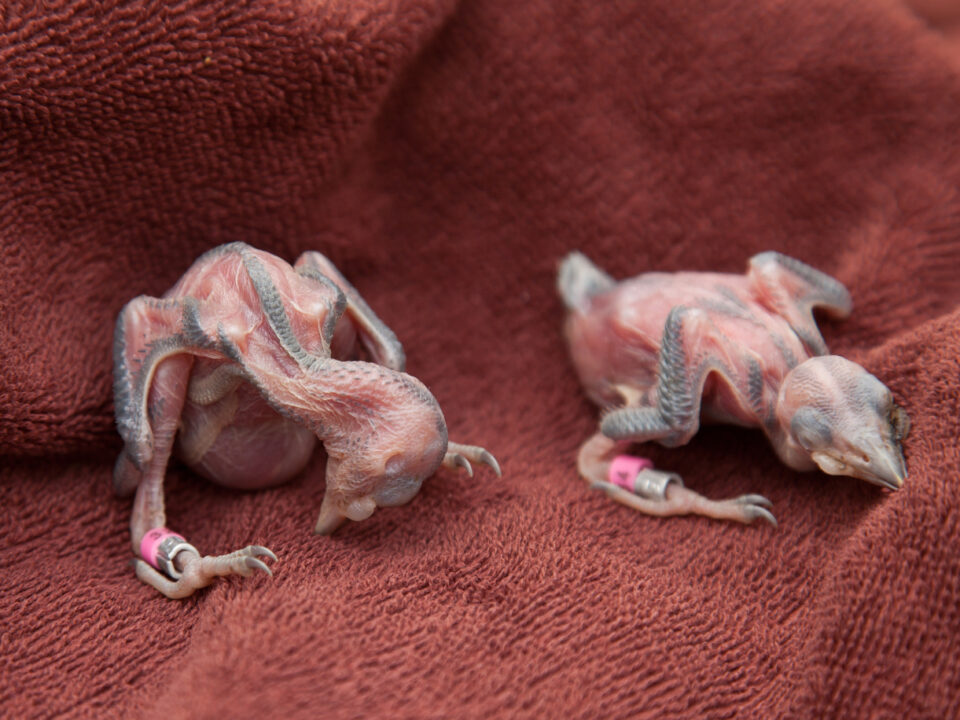Quarry Birds

New Paper: Social burden and bald eagle recovery
July 11, 2022
From penthouse view to penthouse view
July 11, 2022By: Bryan Watts
7/10/22
The high demand for rock and other resources to supply our growing infrastructure needs along with modern quarry techniques and machinery is creating nesting habitat for bird species and leading to range expansions. With the gracious partnership of Luck Stone, Vulcan, XXX and Fairfax County, CCB had the opportunity to survey 13 quarries during the early spring of 2022 to determine which bird species were using them.
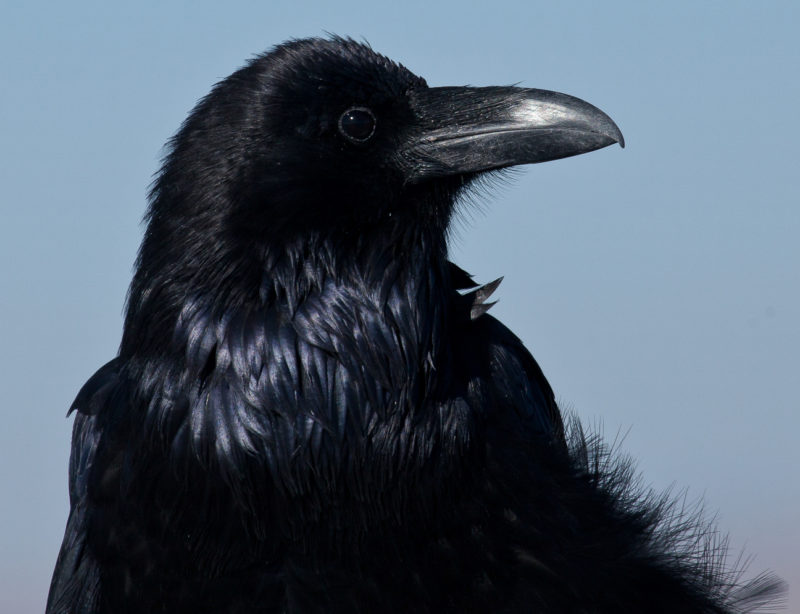
From a habitat perspective, what is unique about the quarries is the availability of shear high walls that mimic natural cliff formations found mostly in the mountains. A small collection of species nest on shear walls because they offer a refuge from ground predators such as raccoons and foxes. Historically, nesting distribution of these species has been constrained by the distribution of cliffs. Some of these species have adapted to using bridges and buildings and the construction of these structures has been fueling range expansions. The quarries appear to be serving this same function and allowing further range expansion.
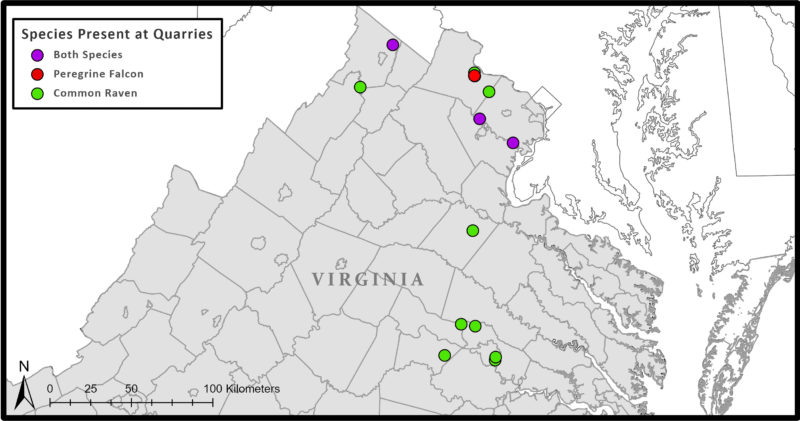
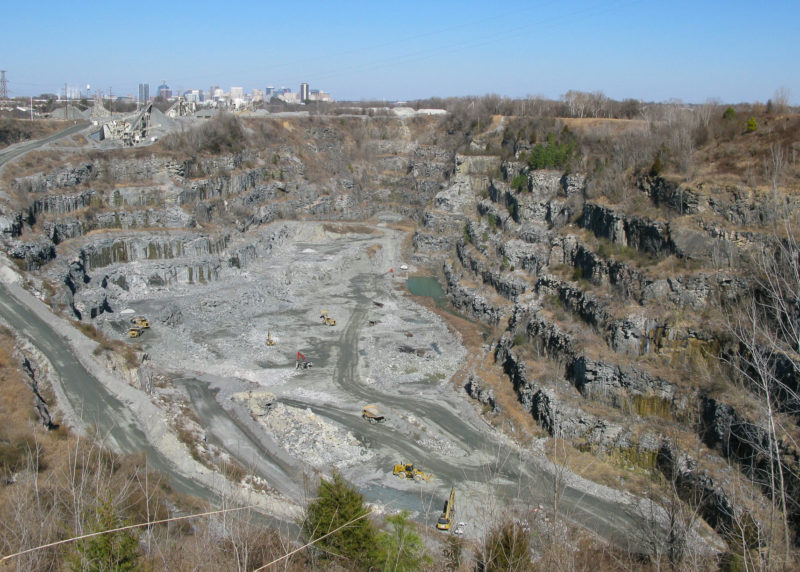
Two prominent wall-dependent species, the common raven and peregrine falcon, were found in quarries. Common ravens have historically been confined to the mountain region of Virginia but in recent years have been expanding east by nesting on bridges. Pairs of ravens were found nesting in 12 of the 13 quarries, suggesting that the quarries are facilitating further range expansion. Historic distribution of peregrine falcons has also been associated with the mountains. However, since reintroduction the species has been associated with bridges, buildings and other man-made structures. Peregrines were found nesting in 4 of the 13 quarries, suggesting that quarries represent increasingly important nesting areas for this recovering population.
Two other wall-dependent species, the rock dove and eastern phoebe, and three bank-dependent species, the belted kingfisher, bank swallow and rough-winged swallow, were also found nesting in quarries. Quarry use by these species does not represent significant expansions of their ranges but does suggest that they are adapting to the unique features of the quarries.
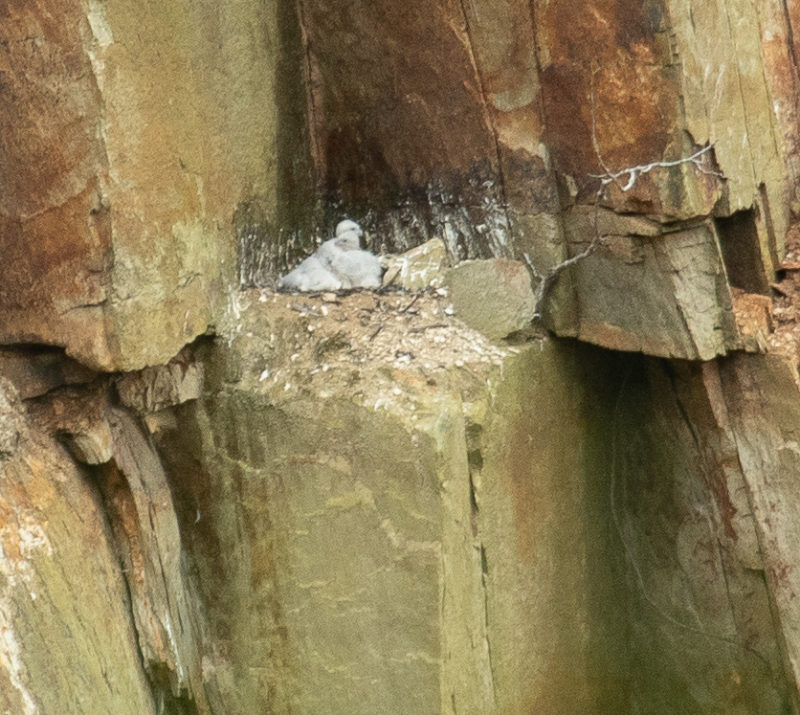
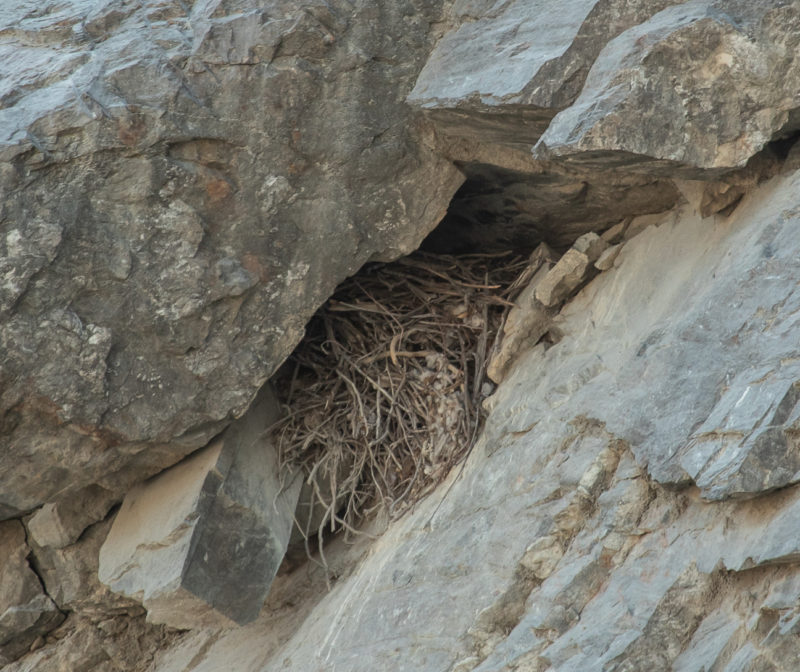
One of the most striking observations of the quarries visited in 2022 was the quality of the shear high walls. During the spring of 2005, Bryan Watts and Shawn Padgett conducted a helicopter survey of natural cliff formations in Virginia and parts of West Virginia, North Carolina and Tennessee. The survey included 242 cliff faces. All of the quarry high walls examined in 2022 would have been in the top 10% of natural cliffs in terms of openness and sheerness. Many of the natural cliff formations examined in 2005 were eroded, with high levels of occlusion from trees growing up from the base. The difference is reflected in the occupancy rates. Common ravens were detected in 12 of 13 (92%) quarries compared to only 30 of 242 (12%) natural cliffs. Peregrine falcons were detected 4 of 13 (31%) quarries compared to 4 of 242 (2%) natural cliffs.
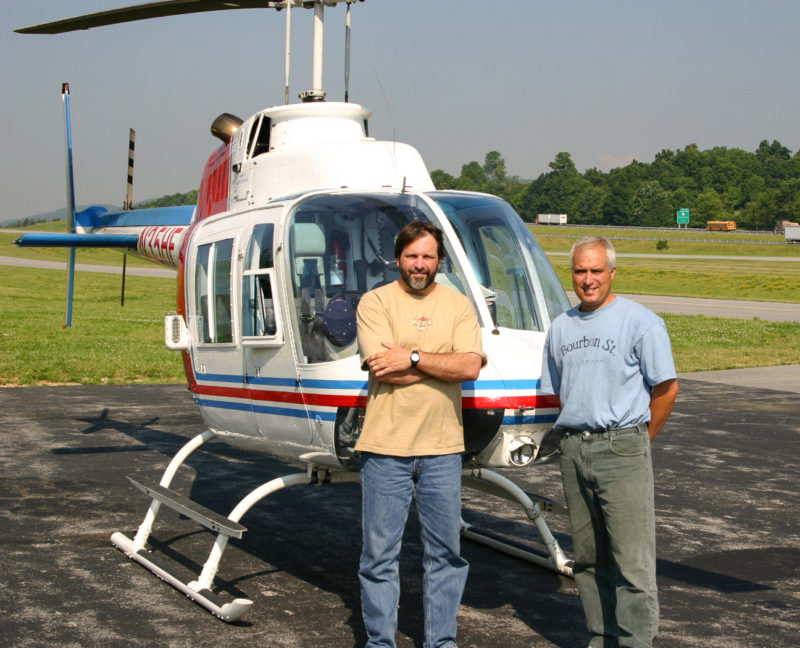
Quarries are providing high-wall habitat in Virginia and facilitating range expansion for wall-dependent nesters. We hope to survey more quarries in the coming years to better understand the role quarries are playing in supporting these rare species.
Related posts
Adult female from Elkins Chimney territory. Both the female and male were lost from this site between 2024 and 2025 nesting seasons and were not replaced. This territory has been occupied since 1995. Five territories were vacated between 2024 and 2025 along the Delmarva Peninsula in VA. Photo by Bryan Watts

